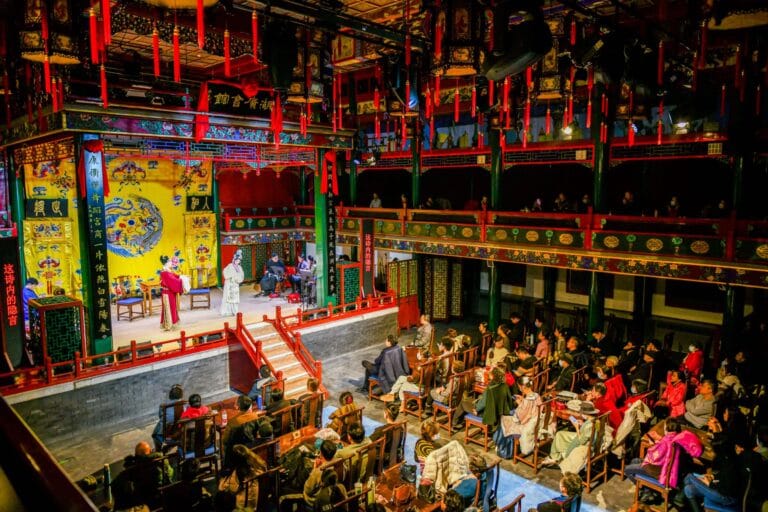Chengdu Panda Bases Guide: Which One Should You Visit?
Seeing a giant panda is a travel dream for millions. And Chengdu, the vibrant capital of Sichuan province, is unequivocally the panda capital of the world. But planning this once-in-a-lifetime experience comes with a crucial question that puzzles many travelers: with four different panda bases to choose from, which one should you actually visit?
This is not a small decision. Each base offers a dramatically different experience. Your choice will impact your travel time, budget, the crowds you’ll face, and even the kind of panda behavior you are likely to see. As a team that has spent years guiding visitors through these incredible sanctuaries, we have seen the joy of a perfectly planned panda trip and the slight disappointment of a mismatched expectation.
Are you a family with limited time hoping to catch a glimpse of newborn panda cubs? Or are you a dedicated wildlife enthusiast dreaming of seeing pandas in a vast, naturalistic environment with almost no one else around? The answer matters.
This in-depth guide will go beyond the surface-level descriptions. We will provide an honest, comprehensive breakdown of all four major panda centers in the Chengdu region. We will analyze the pros and cons, share insider tips, and give you the detailed logistical information you need to make the perfect choice.
Table of Contents
Our quick recommendation remains clear for those in a hurry: For most first-time visitors with limited time, the main Chengdu Research Base of Giant Panda Breeding is the most practical choice. However, for travelers who can spare a full day and seek a more profound, less crowded experience, the Dujiangyan Panda Base is our top recommendation and personal favorite.
To help you visualize the differences, let’s start with a direct comparison.
Chengdu Panda Bases: A Detailed Comparison
Feature | Chengdu Panda Base | Dujiangyan Panda Base | Wolong Panda Valley | Bifengxia Panda Base |
|---|---|---|---|---|
Best For | First-time visitors, seeing baby pandas, short trips | Fewer crowds, conservation focus, Panda Volunteer Program | Serious panda lovers, stunning mountain scenery | A multi-day trip, combining pandas with hiking |
Distance from Chengdu | Approx. 15 km (9 miles) | Approx. 67 km (42 miles) | Approx. 130 km (81 miles) | Approx. 150 km (93 miles) |
Typical Travel Time | 30 to 60 minutes | 1 to 1.5 hours | 2 to 2.5 hours | 2.5 to 3 hours |
Time Needed on Site | Half a day (3 to 4 hours) | Half a day to a full day | A full day is essential | A full day or an overnight trip |
Crowd Level | Very High | Moderate to Low | Very Low | Very Low |
Landscape | Manicured park, zoo-like | Natural forest, spacious enclosures | Wild, mountainous valley | Lush, scenic gorge and canyon |
Chance of Seeing Babies | Highest | Moderate | Moderate | Moderate |
Our Rating | 4 out of 5 | 5 out of 5 | 4 out of 5 | 3.5 out of 5 |
Chengdu Research Base of Giant Panda Breeding (Xiong Mao Ji Di)
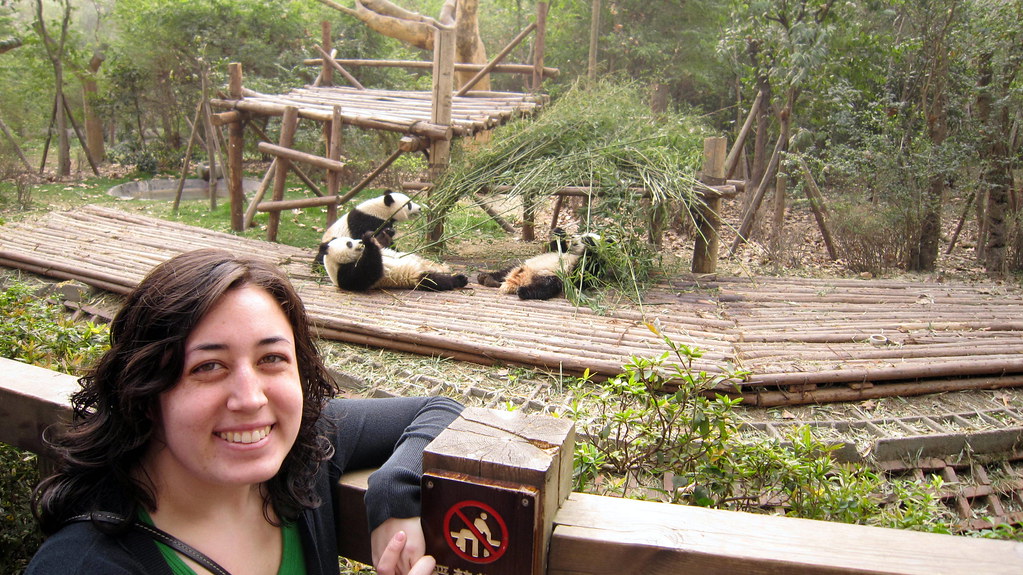
This is the celebrity of the panda world. Located within the Chengdu suburbs, it is the most famous and accessible panda facility globally. It functions as a world-class research institution, a successful breeding center, and a beautiful park all rolled into one. If your time in Chengdu is short, this is almost certainly the base you will visit.
Logistics at a Glance
- Distance from Downtown (Tianfu Square): Approximately 15 kilometers (9 miles).
- Travel Time: 30-60 minutes depending on traffic.
- How to Get There:
- By Subway: This is the most efficient method. Take Line 3 towards Chengdu Medical College. Get off at Panda Avenue Station (熊猫大道, Xiongmao Dadao). Use Exit A, and from there, you can take the dedicated shuttle bus (Panda Bus D01) directly to the entrance, which takes about 10 minutes. Alternatively, a taxi from the subway exit takes less than 10 minutes.
- By Taxi/Didi: A direct ride from the city center will cost around 40-60 RMB. It’s very convenient but be sure to account for potential morning rush hour traffic.
- By Bus: Several public bus routes go to the base, but for non-Chinese speakers, the subway is much simpler to navigate.
The Experience at the Chengdu Panda Base
Visiting this base feels like entering a sprawling, beautifully landscaped botanical garden that happens to be filled with pandas. The pathways are wide and paved, winding through dense bamboo groves and past serene swan lakes. It is incredibly well-maintained and easy for visitors of all ages and mobility levels to explore.
The main attractions are the large, open-air enclosures that house pandas of different ages, from energetic sub-adults to sleepy mature adults. The highlight for most is the Sunshine and Moonlight Delivery Houses, the nurseries of the facility. If you visit during the right season (typically late summer through autumn), you may see tiny, pink newborn cubs in incubators. Further along, you might see fluffy toddlers learning to climb. This is the single biggest reason people choose this base.
Beyond the giant pandas, the base also has a fantastic section for red pandas. These smaller, cat-like creatures are incredibly active and charismatic, and their enclosures allow for wonderful viewing opportunities.
What We Love
- Unmatched Accessibility: No other base comes close to its convenience. You can visit in a morning and still have the afternoon for other activities in Chengdu.
- The Panda Nursery: It has the most successful breeding program. This gives you the highest probability of seeing tiny panda cubs, which is a truly unforgettable sight.
- Excellent Facilities: The base is well-equipped with clear signage (in English), clean restrooms, and small cafes. It’s very user-friendly for international tourists.
What to Consider
- The Overwhelming Crowds: This cannot be overstated. As the most famous base, it attracts enormous crowds. During peak season and holidays, the pathways become congested, and you will have to wait your turn for a spot at the best viewing windows, especially at the nursery. This can detract from the sense of wonder.
- A “Zoo-like” Atmosphere: While the pandas have excellent care and large enclosures, the environment is undeniably curated. It feels more like a world-class zoo than a wild sanctuary. The constant presence of large crowds reinforces this feeling.
Verdict: Choose the Chengdu Panda Base if you are on a tight schedule, traveling with children who need easy access, or if your primary goal is the chance to see newborn panda cubs. To make the most of it, arrive the moment it opens at 7:30 AM to beat the tour buses and see the pandas during their active breakfast feeding time.
Dujiangyan Panda Base
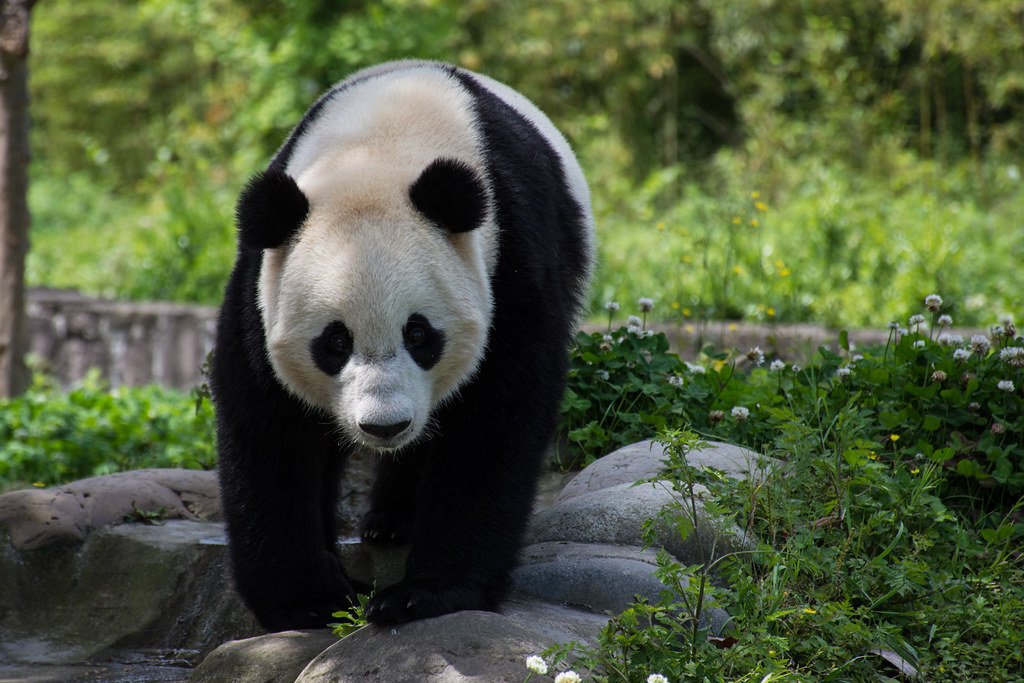
Located near the UNESCO World Heritage site of the Dujiangyan Irrigation System, this base offers a completely different and, in our opinion, superior experience. Managed by the China Conservation and Research Center for the Giant Panda (CCRCGP), its primary focus is on panda care, rehabilitation, and providing a peaceful retirement home for pandas returning from zoos overseas.
Logistics at a Glance
- Distance from Downtown (Tianfu Square): Approximately 67 kilometers (42 miles).
- Travel Time: 1 to 1.5 hours.
- How to Get There:
- By High-Speed Train: This is the best option for independent travelers. Go to Xipu Railway Station (犀浦站) in Chengdu (accessible via Subway Line 2 and Line 6). From there, take a high-speed train to Lidui Park Station (离堆公园站) in Dujiangyan. The train ride is about 30 minutes. From the station, a taxi to the panda base takes about 15-20 minutes.
- By Private Car/Tour: This is the most direct and hassle-free option. A private car allows you to travel on your own schedule and easily combine the visit with the Dujiangyan Irrigation System or Mount Qingcheng.
- By Bus: Long-distance buses run from Chengdu’s Chadianzi Bus Station to Dujiangyan, but the train is faster and more comfortable.
The Experience at the Dujiangyan Panda Base
The moment you arrive at Dujiangyan, you feel the difference. The air is cleaner, the atmosphere is tranquil, and the base is seamlessly integrated into the forested mountainside. The enclosures here are enormous, giving the pandas incredible amounts of space to climb, forage, and behave naturally. You are not just looking at a panda in a pen; you are observing a panda in a habitat.
The crowd size is significantly smaller than at the main Chengdu base. This transforms the experience. You can spend long, uninterrupted periods watching a panda without being jostled. You can hear the sounds of the forest and the crunch of bamboo. Many of the pandas here are “celebrities” in their own right, such as the famous Tai Shan who was born in the US, and you can read their life stories. The focus is clearly on the well-being and a nimals. It is an educational and deeply moving experience.
What We Love
- Peace and Tranquility: The lack of huge crowds is a massive advantage. It allows for a more personal, respectful, and enjoyable wildlife viewing experience.
- Vast, Natural Enclosures: The environment feels much more authentic. Seeing pandas explore such large, forested spaces is wonderful.
- Strong Conservation Message: The base’s focus on rescue and rehabilitation is palpable. You leave with a greater appreciation for the scientific work being done to save this species.
- The Premier Panda Volunteer Program: This is the best and most reliable place for international visitors to participate in a hands-on volunteer experience, getting you closer to the conservation work.
What to Consider
- Requires More Time: You must dedicate at least half a day, and more realistically a full day, to visit comfortably from Chengdu.
- Lower Chance of Newborns: While the base does have younger pandas, it is not the primary breeding center. You are less likely to see newborn cubs in a nursery setting.
Verdict: This is our top recommendation for any traveler who can dedicate a full day. The Dujiangyan Panda Base provides a more ethical, peaceful, and authentic panda encounter. It is well worth the extra travel time.
Wolong National Nature Reserve (Shenshuping Panda Base)
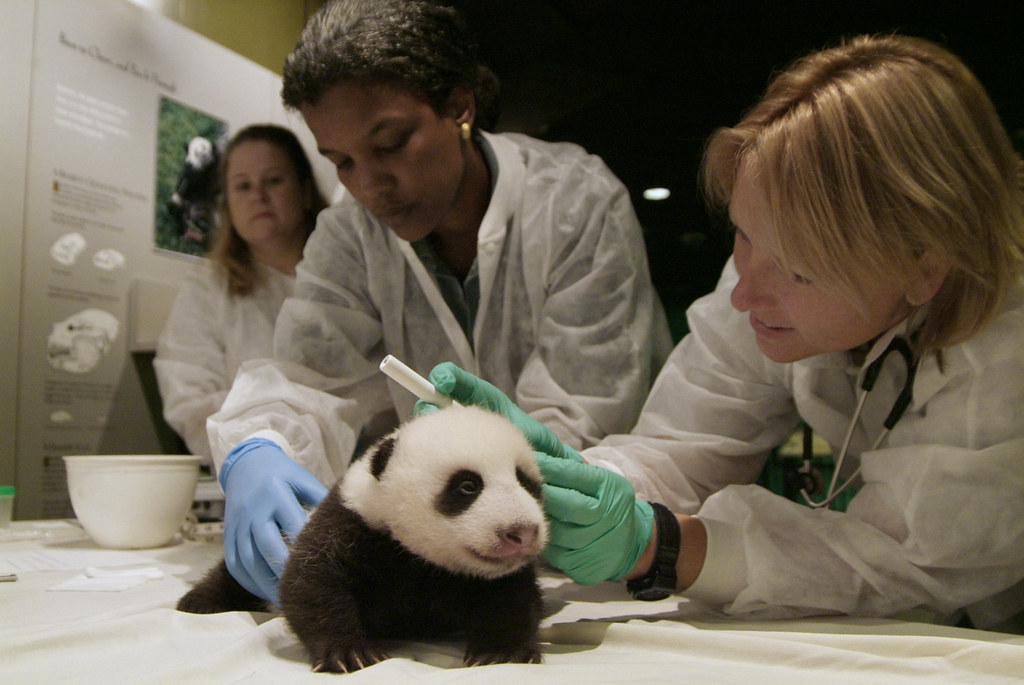
Wolong is the legendary heartland of panda conservation. This is where the world’s first giant panda research center was established. After being tragically destroyed in the 2008 Sichuan earthquake, the new Shenshuping Panda Base was built in a stunningly beautiful and remote mountain valley. A visit here is for the true wildlife aficionado.
Logistics at a Glance
- Distance from Downtown (Tianfu Square): Approximately 130 kilometers (81 miles).
- Travel Time: 2 to 2.5 hours.
- How to Get There:
- By Private Car/Tour: This is the only truly viable option for a day trip. The drive itself is scenic, passing through the dramatic landscapes of the western Sichuan mountains. There is no direct or convenient public transport.
- By Bus: You can take a bus from Chadianzi Bus Station to the town of Wolong, but you would then need to arrange local transport to the base, making it impractical for a day trip.
The Experience at Wolong
The journey to Wolong is an adventure in itself. As you leave the Chengdu plain, the landscape transforms into steep, mist-shrouded mountains. The Shenshuping Base is situated in a pristine valley, and you feel completely immersed in the pandas’ native habitat. The air is mountain-fresh, and the scale of the facility is immense.
The enclosures are the largest and most natural of all the bases, designed to prepare pandas for reintroduction into the wild. You will do a significant amount of walking along elevated boardwalks, peering down into vast tracts of forest where the pandas roam. It feels less like a park and more like an expedition. Because the enclosures are so large, you may need more patience to spot the pandas, but the reward is seeing them in an environment that is as close to wild as possible.
What We Love
- Unparalleled Wilderness Setting: The location is breathtaking. It is a powerful experience to see pandas in the same mountain range where their wild cousins live.
- Frontline of Conservation: This is the epicenter of re-wilding research. You are witnessing the most critical work being done to ensure the long-term survival of the species.
- Virtually No Crowds: You will often feel like you have the entire reserve to yourself, offering an incredibly serene and exclusive viewing experience.
What to Consider
- Accessibility and Distance: It is a long journey that requires a full-day commitment and the expense of a private driver or tour.
- Weather Sensitivity: The mountain location means weather can be unpredictable, with rain and fog possible at any time of year.
- Pandas Can Be Distant: The sheer size of the enclosures means pandas may be far away or hidden in the dense foliage. Binoculars can be a good idea.
Verdict: Wolong is for the passionate wildlife enthusiast and adventurous traveler who wants to get off the beaten path. It’s for those who prioritize seeing pandas in their most natural setting over the convenience of a city park.
Bifengxia Panda Base
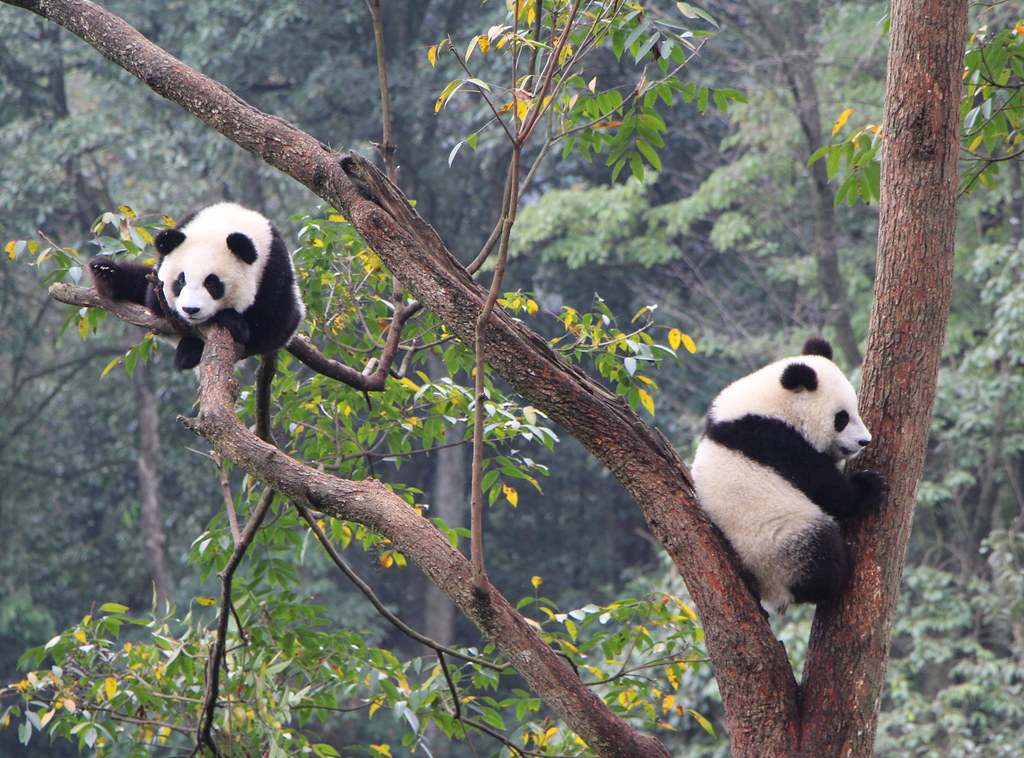
Located near the city of Ya’an, the Bifengxia Panda Base became a crucial facility when it took in many of the pandas from Wolong after the 2008 earthquake. The base is uniquely situated inside a stunning scenic area, a lush, green canyon filled with waterfalls and walking trails.
Logistics at a Glance
- Distance from Downtown (Tianfu Square): Approximately 150 kilometers (93 miles).
- Travel Time: 2.5 to 3 hours.
- How to Get There:
- By Private Car/Tour: This is the most recommended option, especially if you plan to return the same day.
- By Bus: You can take a long-distance bus from Chengdu’s Xinnanmen Bus Station to Ya’an, and then another bus or taxi to the Bifengxia scenic area. This is a slow and complex journey, making an overnight stay almost necessary.
The Experience at Bifengxia
A trip to Bifengxia is a two-for-one deal: pandas and a spectacular natural park. The panda enclosures are spread out along the hillsides of the gorge. Getting around involves a combination of walking and taking internal park shuttle buses. The setting is undeniably beautiful, with the sounds of streams and waterfalls providing a constant natural soundtrack.
However, the layout can feel a bit fragmented. You will spend more time transiting between different areas compared to the other bases. The distance from Chengdu is its biggest drawback, making it a very long and tiring day trip.
What We Love
- Stunning Natural Scenery: The gorge itself is a major attraction. The combination of lush forests, cliffs, and waterfalls is magnificent.
- Hiking Opportunities: You can easily combine your panda viewing with a proper hike through the canyon, making for a very active day out.
What to Consider
- Prohibitive Distance: The 5- to 6-hour round-trip drive from Chengdu makes it a poor choice for a day trip. It is much better suited as an overnight excursion.
- Spread-Out Layout: Navigating the park requires more time and effort, involving waiting for and riding shuttle buses between the different panda areas.
Verdict: Bifengxia is best for travelers who are already planning to spend a night or two in the Ya’an area, or for those who want a multi-day trip that explicitly combines pandas with challenging hikes in a scenic gorge. We do not recommend it for a standard day trip from Chengdu.
A Step Beyond: The Panda Volunteer Program Experience
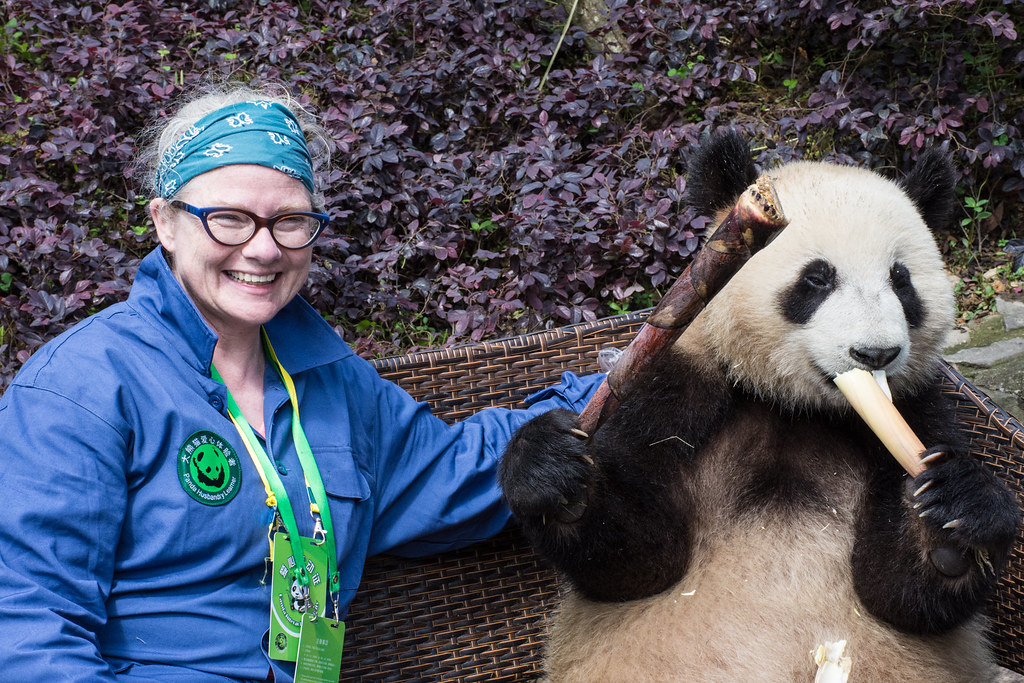
For many visitors, simply seeing a panda isn’t enough. The desire for a closer, more hands-on experience is strong. While the old “panda holding” opportunities are a thing of the past for important ethical reasons, a far more meaningful and educational opportunity has taken its place: the Panda Volunteer program.
This program allows you to go behind the scenes and contribute directly to the pandas’ daily care. It is an unforgettable experience that connects you deeply to the conservation efforts.
Where Can You Be a Panda Volunteer?
The Dujiangyan Panda Base is the primary, most established, and most reliable center for the one-day volunteer program available to international tourists. Its program is well-organized and specifically designed to be both educational for visitors and beneficial for the pandas. While other CCRCGP bases like Wolong have offered similar programs, Dujiangyan is the most consistent and accessible choice from Chengdu.
A Day in the Life of a Panda Volunteer
Your day as a volunteer is a busy and rewarding one. While specifics can vary slightly, a typical schedule looks like this:
- Morning (9:00 AM): You will arrive at the base, register, and be issued with your official volunteer uniform (usually a vest or overalls) and credentials. This is followed by a safety briefing and an introduction to the base by the expert staff.
- First Task – Cleaning: You will become a “panda keeper’s” assistant. The first job is often the most important: cleaning the panda enclosures. This involves sweeping up leftover bamboo from the previous day and clearing out panda droppings. It’s hard work, but it’s vital for the pandas’ health and gives you an appreciation for the keepers’ daily efforts.
- Mid-Morning – An Expert Tour: You will be taken on a tour of the base, learning about the individual pandas living there. Many have incredible life stories, having been rescued from the wild or returned from zoos abroad.
- Late Morning – Food Preparation: Next, you head to the panda kitchen. Here, you will help prepare the pandas’ special meals. This often includes washing and carrying fresh bamboo and, most famously, making “panda cakes.” This specially formulated nutritious bread is a staple of their diet, and you’ll get to help mix the ingredients and shape the loaves.
- Noon – Lunch: You will have a break for lunch, typically a simple and authentic Chinese meal at the staff canteen, eating alongside the real panda keepers.
- Afternoon – The Big Moment: This is the highlight for most volunteers. You get to participate in a feeding session. You will be given bamboo, apples, or panda cakes to offer to a panda. For safety, this is always done through a protective barrier, but it is an incredible moment to be just feet away from one of these gentle giants as it takes the food you prepared.
- Late Afternoon – Education: To round out the day, you will watch an informative documentary about giant panda conservation, biology, and the challenges they face in the wild. This powerfully connects your day’s work to the bigger picture of saving the species.
- End of Day (around 3:00 PM): After a fulfilling day, you will return your uniform and be presented with an official volunteer certificate—a perfect souvenir of your contribution.
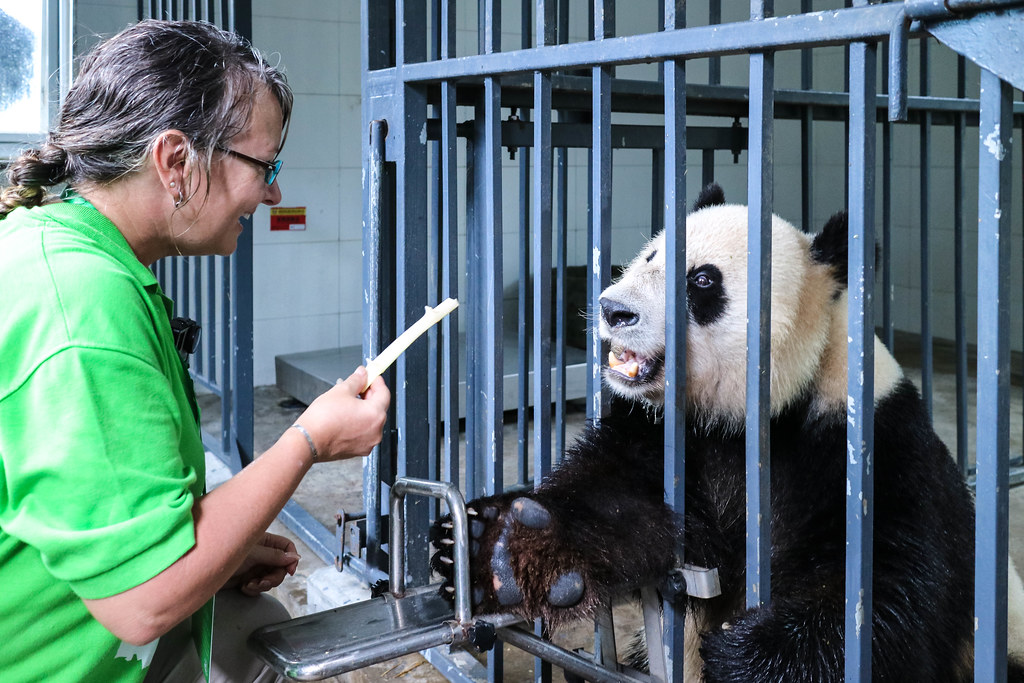
Key Things to Know Before You Book
- Booking is Mandatory: You cannot simply show up and decide to volunteer. The program has limited spots and must be booked well in advance. We can help arrange this as part of your tour.
- Health and Age Requirements: Participants must be in good health and are typically required to be between 10 and 70 years old. You may need to sign a health declaration form.
- Cost: The volunteer program costs significantly more than a standard entry ticket. This fee covers your guide, lunch, uniform, and a donation that directly supports the base’s conservation work.
- What to Wear: Wear comfortable clothes and sturdy, closed-toe walking shoes. You will be on your feet and doing physical work.
DIG DEEPER: How to Be a Panda Volunteer in Chengdu
Your Perfect Panda Trip: Our Final Recommendations
To make the decision as simple as possible, find the traveler profile that best describes you.
- For the Family with Young Children: Choose the Chengdu Research Base of Giant Panda Breeding. Its proximity to the city, paved paths, and high chance of seeing baby pandas make it the most convenient and captivating option for kids.
- For the Thoughtful Traveler Seeking Authenticity: Choose the Dujiangyan Panda Base. If you value a peaceful atmosphere, ethical tourism, and a more natural setting, the extra travel time is an excellent investment for a far superior experience.
- For the Aspiring Wildlife Photographer: Choose the Dujiangyan Panda Base. The lower crowds and naturalistic enclosures provide better opportunities for beautiful, unobstructed photos.
- For the Ultimate Panda Enthusiast: Choose the Dujiangyan Panda Base for the Volunteer Program. If your dream is to get as close as possible to the pandas and contribute to their care, this is the most meaningful experience you can have.
- For the Dedicated Conservationist and Adventurer: Choose the Wolong Panda Base. If your interest in pandas goes deep and you love mountain landscapes, this is the most rewarding pilgrimage you can make.
ALSO READ: Where to See Giant Pandas in China: A Complete Travel Guide
Frequently Asked Questions (FAQ)
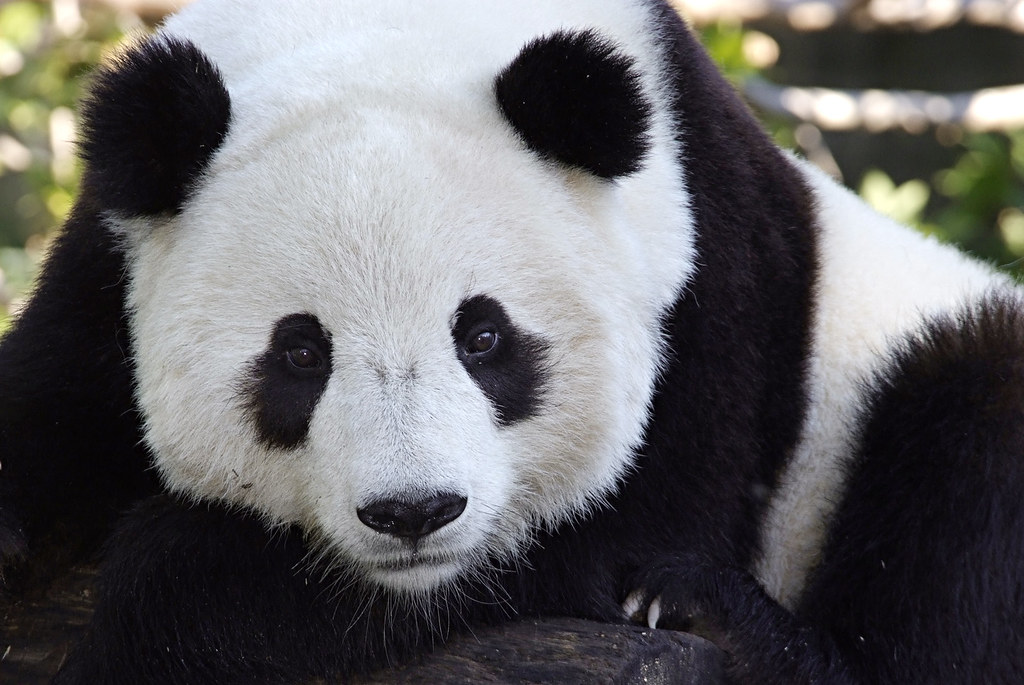
Q1: Can I hold a panda? What about the Panda Volunteer program?
No, you absolutely cannot hold a panda. The practice of “panda holding” for tourist photos was stopped years ago for the health and safety of the cubs. Instead, the ethical and officially sanctioned alternative is the Panda Volunteer program. This allows for a responsible, hands-on experience where you can actively contribute to the pandas’ care without causing them stress. We have detailed what this amazing program involves in the section above.
Q2: What is the absolute best time of day to visit any panda base?
Morning, without a doubt. Specifically, from opening time until about 10:30 AM. This is when the pandas are fed and are at their most active. They will be climbing, playing, and munching enthusiastically on bamboo. By late morning and into the afternoon, most pandas will be doing what they do best: sleeping. An afternoon visit can be very disappointing as you may only see furry lumps napping in the trees.
Q3: Is it better to visit on a weekday or a weekend?
A weekday is always better. All bases, especially the main Chengdu Base, are significantly more crowded on weekends and even more so during Chinese public holidays (such as National Day week in October and Chinese New Year). If your schedule allows, plan your visit for a Tuesday, Wednesday, or Thursday.
Q4: Are the bases wheelchair accessible?
The Chengdu Research Base of Giant Panda Breeding is the most accessible. Its wide, paved paths make it relatively easy to navigate with a wheelchair or stroller. Dujiangyan is mostly accessible, though some paths can be steeper. Wolong and Bifengxia, due to their mountainous terrain and spread-out nature, would be very challenging.
Q5: What should I bring with me on my visit?
Comfortable walking shoes are non-negotiable. You will be doing a lot of walking at every base. Also, bring your passport (it’s often required for ticket purchase), a camera with extra batteries, sunscreen, and a water bottle. For the mountain bases of Wolong and Bifengxia, a light rain jacket is always a wise addition, as the weather can change quickly.







